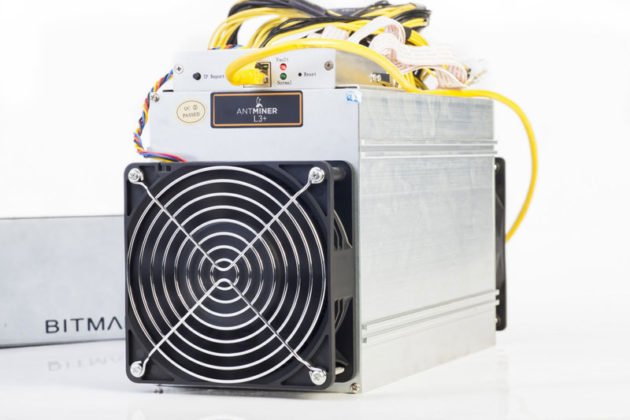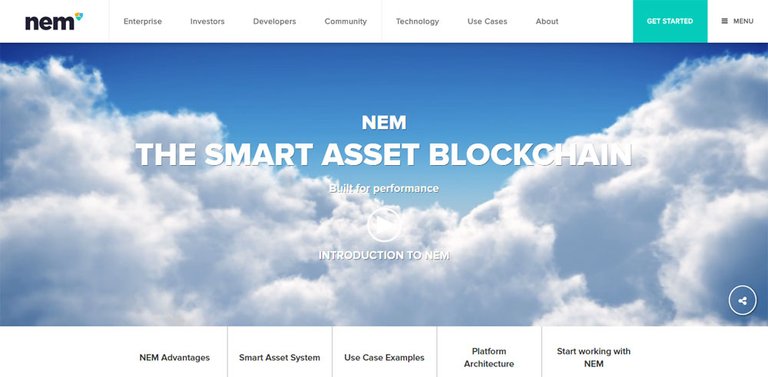
Ethereum, Bitcoin Cash, Dash or Neo are some of these new Cryptocurrency that little by little are becoming more known and whose use begins to popularize. Also called tokens (in general) are the basis on which funds are raised via collective investment or crowfunding in the so-called Initial Coin Offering (ICO) to develop blockchain technology with protocols open to the world on which they rely . That is to say, the start up of the shift
Bitcoin (BTC)

Bitcoin's mining is intentionally designed to be very resource-intensive and difficult, so that the number of blocks found every day by the miners remains stable over time, producing a controlled finite monetary supply.
Individual blocks must contain a working test to be considered valid. This work test (PoW) is checked by other Bitcoin nodes each time they receive a block. Bitcoin uses a PoW function to protect against double expense, which also makes the book of Bitcoin immutable.
THE BEST BITCOINS 2017 MINING HARDWARE
Bitmain AntMiner S9 (Bitcoin)

The Antminer S9 is one of the most recent ASIC miners of the company Bitmain. It has a total of 189 BM1387 chips of 16nm each, to add a processing power of 14 TH / sec and with an energy consumption of around 1375 Watts.

Ethereum (ETH)

It has some very technical differences with Bitcoin, such as the algorithm used, block time, calculation difficulty and prize per mine. But the really differential, as currency, is that in the case of the Ethers there is no defined maximum number.
What really makes Ethereum powerful is that it allows you to use the blockchain for more than having a virtual, distributed currency. Ethereum allows you to create smart contracts. Although Bitcoin has certain characteristics that allow it to create this type of contracts, Ethereum is the basis of its creation and are much more powerful.
These open source contracts can be used to securely execute a wide variety of services, including voting systems, financial exchanges, crowdfunding platforms, intellectual property and autonomous decentralized organizations.
Ethereum works in a decentralized way through a virtual machine called Ethereum Virtual Machine (EVM). Programs that perform intelligent contracts are written in high-level programming languages of the full Turing type, such as Serpent or Solidity, which follow the contract design methodology to create intelligent contracts
THE BEST VIDEO CARDS FOR ETHEREUM MINING
 AMD Vega 64 and AMD Vega 56: Launched on the market in August this year, the AMD Vega series incorporates the latest GCN 5 architecture (Vega 10) and is based on the 14nm FinFET manufacturing process. Its high hashrate and moderate power consumption make them ideal for the mining of ethereum.
AMD Vega 64 and AMD Vega 56: Launched on the market in August this year, the AMD Vega series incorporates the latest GCN 5 architecture (Vega 10) and is based on the 14nm FinFET manufacturing process. Its high hashrate and moderate power consumption make them ideal for the mining of ethereum.
 AMD Radeon Rx 500: Undoubtedly this family of graphics cards has become the favorite of Ethereum's mining enthusiasts, for several reasons. Launched earlier this year, the AMD RX 500 series graphics card family incorporates the latest Polaris architecture based on the 14nm FinFET manufacturing process. They are the favorites of the Ethereum miners for several reasons: optimum efficiency, high hashrate, low power consumption, etc.
AMD Radeon Rx 500: Undoubtedly this family of graphics cards has become the favorite of Ethereum's mining enthusiasts, for several reasons. Launched earlier this year, the AMD RX 500 series graphics card family incorporates the latest Polaris architecture based on the 14nm FinFET manufacturing process. They are the favorites of the Ethereum miners for several reasons: optimum efficiency, high hashrate, low power consumption, etc.
 AMD Radeon RX 400: Introduced to the market in 2016, they belong to the generation prior to the RX 500 series and offer similar performance. Just as the RX 500s are based on Polaris, an architecture that has proved to be the most optimal for executing mining scripts due to its high processing power and low power consumption.
AMD Radeon RX 400: Introduced to the market in 2016, they belong to the generation prior to the RX 500 series and offer similar performance. Just as the RX 500s are based on Polaris, an architecture that has proved to be the most optimal for executing mining scripts due to its high processing power and low power consumption.
 AMD Radeon R9 300, R9 Fury, R9 Nano: Released to the market in 2015, they are graphics cards that already have some years in the market but thanks to the high computing power of the Graphics Core Next architecture continue to offer excellent hashrate.
AMD Radeon R9 300, R9 Fury, R9 Nano: Released to the market in 2015, they are graphics cards that already have some years in the market but thanks to the high computing power of the Graphics Core Next architecture continue to offer excellent hashrate.
 Nvidia Geforce GTX 1000: Launched on the market in May 2016, the NVIDIA GTX 1000 series graphics cards are powered by the Pascal architecture and are designed with the latest 16nm FinFET manufacturing process, giving them a high processing power with an incredibly low energy consumption.
Nvidia Geforce GTX 1000: Launched on the market in May 2016, the NVIDIA GTX 1000 series graphics cards are powered by the Pascal architecture and are designed with the latest 16nm FinFET manufacturing process, giving them a high processing power with an incredibly low energy consumption.

Litecoin (LTC)

Miners can initially generate 25 coins per block. The number of coins generated is reduced by half every 4 years (840,000 blocks). Therefore, the Litecoin network is programmed to produce approximately 4 times more monetary units than Bitcoin.
The Scrypt algorithm of Litecoin is less demanding in relative terms than the algorithm used by Bitcoin, making it easier to extract Litecoins using desktop computers than those of a lifetime.
The block generation time for the Litecoin is 2.5 minutes, instead of the 10 minutes needed for Bitcoin. This makes Litecoin more efficient than Bitcoin when handling a large volume of transactions.
Bitmain Antminer L3+ (Litecoin)
Antminer L3 + is currently the most powerful Litecoin miner in Bitmain. It has a hashrate of 504MH / s with an energy consumption of 800W and an approximate starting price of $ 1644.


IOTA (MIOTA)

This cryptomoneda has introduced new features and technologies to the Blockchain community. For example, it operates using the single POI algorithm. POI or Importance Test, which helps determine the user who will calculate the next block. The new algorithm guarantees the fair distribution of the possibilities in the calculation of blocks, since it takes into account not only the quantity of coins stored in the user's wallet, but also all incoming and outgoing transactions. This makes it possible to reward the users who make the greatest contribution to the development and distribution of foreign exchange.
The average generation time of the block is one minute, 10 times smaller compared to Bitcoin, so NEM is able to execute and validate many more transactions in less time.
NEM allows you to make instant transfers of money worldwide without large fees. All portfolios are highly secure and exclude any possibility of unauthorized access.

Dash (DASH)

Dash transactions are almost instantly confirmed by the master nodes network. This is a great improvement over the Bitcoin system, where transactions take a long time to be confirmed because all the work is done by the miners.
Compared to Bitcoin's SHA-256 algorithm, Dash incorporates a total of 11 algorithms, collectively referred to as X11. This makes it much more difficult to enter or hack the Dash network. Due to this, Dash is considered as a payment method with criptomoneda more secure than Bitcoin.
Chained algorithms make Dash easier to use for mining compared to other cryptones. For example, GPUs require 30% less electrical energy than Litecoin's Scrypt algorithm and heat up by 30% to 50% less.
Bitmain Antminer D3 (Dash)
The Antminer D3 is the latest product from the Bitmain company, launched in 2017. It focuses on mining X11, an algorithm used by the popular cryptoneda Dash. With a hash of 15 GH / s, it consumes 1200w and is valued at $ 1599. It is one of the most profitable ASIC miners today.


Monero (XMR)

With Monero, details about transactions are not publicly visible, while with Bitcoin, the block string is publicly visible so anyone can search for transactions.
Another advantage that Monero offers is that it allows both the use of the GPU and the CPU for coin mining, while in Bitcoin, both CPU and GPU usage is practically useless today.
Monero is strictly powered by Proof-of-Work, but specifically employs a mining algorithm that has the potential to be efficiently mapped to billions of existing devices (any modern x86 CPU). Monero uses the CryptoNight (PoW) Work Test, which is designed for use on ordinary CPUs.
Scalability is another difference in which they focus, because the size of the block has no predisposed limits. This is calculated automatically after a trial period, and there will always be enough reward for the miners with a subsequent inflation of 1% after their first emission curve. In addition, a larger block size than Bitcoin implies being able to handle a wider number of transactions per second.
Its ultimate primordial feature is fungibility, ie all the coins in this blockchain are identical and can be exchanged indifferently between them, such as fiduciary coins. It's not just a token or a reward: it's real money.
Thanks for the summary